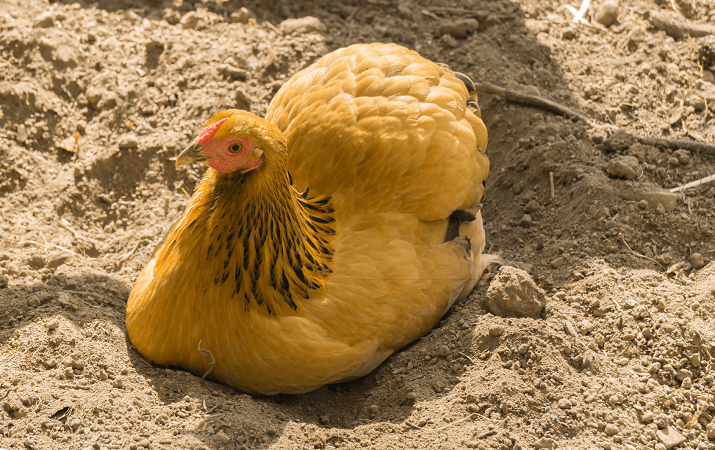

Most poultry farmers use conventional bedding materials in the coop, spreading straw, hay, wood shavings or similar over the floors and in the nest boxes.Some people however, use sand as flooring material. There are Various advantages of using sand for your chicken coop. The main reasons are:
Less Moisture
Sand fails to retain moisture in itself, unlike other bedding options. Decay or moisture retention in the litter can often lead to respiratory infections and bacterial growth. In the cold months, it can often lead to frostbite and cold. You effectively reduce these risk by using sand. Furthermore, it dries out any waste products that the chickens produce so it can be removed. As a result, you won’t have to worry about stepping into it or getting your shoes dirty. It also makes it easier to clean.
Better for Digestion
Unlike the traditional litter, sand does not cause impaction. In fact, it proves to be beneficial to the digestive tract. When ingested, it functions as grit and helps break down fibrous foods.
Thermal Stability
Sand helps keep the coop temperature stable and allows your hens to enjoy warmth and comfort. On the other hand, they do keep your coop cooler in the summers, making them perfect for all seasons.
Functions as a Dust Bath
Since sand inside the coop is dry, it can be used as a dust bath. Your chicken might get dirty in the muck in your backyard. Having sand inside your coop will clean your hens’ feet and protect the eggs from getting dirty as well.
Easy to Clean
Sand is the easiest to clean since you can use a cat litter scoop or a sifter. Furthermore, it is more low maintenance than some of the other options. As a result, you don’t need to clear out the entire coop for a fresh batch. Instead, you just clear out the dirty sections.
Economical
Moreover, sand is quite affordable. You can find a huge bag of it for less than $10.
Eco-friendly
When keeping chickens, sand is also environmentally friendly due to the fact that it can be re-purposed and reused. In fact, you can easily clean it and use it again for the hen house. It looks and fees cleaner. Also, researchers have found lower levels of E. coli and other bacteria in the sand.
Most sand is not processed or manufactured and involves less travel, saving fuel, and energy. In addition, as sand cannot be decomposed, it leads to easier composting.
Conserves Food: As sand is easier to sift through, food is easier to find in the sand. This ensures no food gets wasted.
Types of Sand
If you use the wrong type of sand, it can end up causing more harm. There are basically many varieties of sand on the market; however, the best ones for chicken coops are river-run or washed construction-grade sand.
Always remember to use natural sand for your bedding. This is because natural sand has particles that vary widely in size including pebbles and grit. On the other hand, commercially-crushed sand is too fine and can be easily inhaled. Furthermore, they may cause drainage and drying problems.
Furthermore, these types of sand contain more silica than natural sand, which tends to be a major cause of respiratory problems. Do not buy sandbox or play sand as it is also finely milled.
 Contact Jaguza Support
Contact Jaguza Support